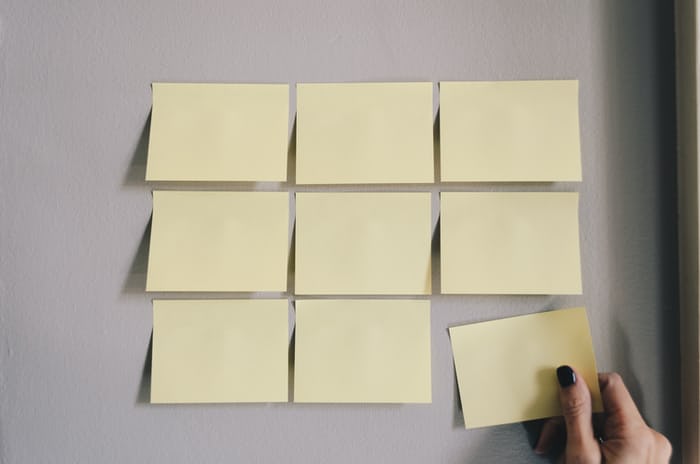Job hunting is an extensive process, the first step to which is sending out applications.
And while a resume is the most important document to find a job, a cover letter helps the recruiters understand your candidature better.
Attaching a well-written and formatted cover letter with your resume can go a long way in your job search, making it crucial for job seekers to get it right.
Since finding the right cover letter format is so important, this is a blog to guide you through the process of writing an impeccable one to get you your dream job.
Let’s get started!
The 7-step guide to a perfect cover letter format
Here are 7 easy steps to help you get the format for the cover letter right.
1. Work on the format of cover letter
Even though a book should not be judged by its cover, the chances of your application getting shortlisted are based on how presentable your cover letter is.
This is why the cover letter format can make or break the deal when it comes to getting hired.
Choose a simple and elegant layout for your cover letter to make it to the recruiter's good books.
Some tips to get the format of the cover letter right are:
-
Have a letterhead on your cover letter placed on the top-center of the cover letter, including your name in bold and large font, followed by your contact details like phone number, email address, and residential address.
You can also mention these details on the top-left corner of the page in case you don’t have a letterhead.
-
In the top-left corner, address the recipient. Mention their name, designation, company name, and address of the company they work for.
-
On the top right, mention the date in either the DD/MM/YYYY (07/05/2020) format or the regular [(month)(date),(year)] (May 7, 2020) format.
Since the interviewers get several applications and get a chance to go through limited cover letters only, make sure your cover letter stands out, is brief, and fits on a single page.
Leave space for a couple of lines and place the salutation on the left-hand side, followed by the rest of the cover letter
2. Tailor your cover letter to match the job description
The cover letter format is of utmost importance, but the context forms the basis of your application.
Make sure you don't send the same cover letter to all the companies you are applying to.
When sending out a cover letter, tailor the content based on the job description, and modify your cover letter and format to match the recruiters.
Start with personalized salutations- figure out who should be the recipient of the letter.
You can do some research on the company website, or ask the HR official (if you are in touch with them) about the concerned person.
In case you are unable to find the name of the hiring manager, don’t stress!
You can always use generic salutations like “Dear Sir/Ma’am”, and “To the Hiring Manager”.
Apart from this, talk about the skills and qualifications you have in common with the job description.
3. Structure the cover letter before you start writing
The structure of a cover letter is what forms the basis of its format.
How you divide the talking points in a cover letter has a higher impact than what you include in it.
So, draw a rough structure of what you want the cover letter to look like. Since an important aspect of the cover letter format is its length, make sure you don’t end up with a long cover letter.
- A well-formatted cover letter should be no longer than 1 page with only three sections- An introduction, body, and conclusion.
- The 3 paragraphs must not exceed more than 3-5 lines each.
- The end of the cover letter should be your signing off.
- Include a brief and crisp valediction after the conclusion followed by your signature and designation
4. Write an impressive introduction
Recruiters receive several applications every day, and skimming through them all can be taxing. It then becomes crucial that you write a cover letter that stands out.
The best way to grab attention is to write an impressive introduction that makes the recruiter want to know more about you.
So, write a killer introduction with a hint of extra oomph to keep the recruiter hooked to your application.
Use this space to tell the recruiters how you are the perfect match for the job with an impeccably formatted cover letter.
Here is the cover letter format for the introduction:
-
Answer the 4Ws (the Who, What, When, and Why) of your work experience.
Talk about who you are, what you do currently, since when (what is your overall experience), and why are you writing to them.
-
Mention 3-4 qualifications that make you a good fit for the position.
-
Keep it brief and crisp. Avoid using long sentences and complex words.
-
Keep it 3-5 lines long only.
-
Mention the source from which you heard about the opening.
5. Pay attention to the cover letter format for the body
Now that you have written the introduction, it's time to focus on the second paragraph: the body.
This is where you briefly answer why should the recruiter hire you for the open position.
Use this space to talk more about your qualifications and give concrete examples of the application of your skills in your work tenure.
The trick to getting it right is to target the company’s requirements. Read the job description carefully to outline 2-3 skills that you can justify with your experience.
Briefly describe scenarios where you faced an obstacle and how you overcame it with the most important skill.
If you are a fresher, quote experiences from college events or just talk about how you have prepared to succeed in the role.
Some things to keep in mind to get the format of a cover letter's body are:
-
Mark the most important keywords in bold font.
-
Include bullet points in the body to get the reader’s attention.
-
Strike a balance between talking about your experience and stating facts.
6. End the cover letter on a good note
How you wrap up outlines the cover letter format on the whole. After having introduced yourself and talking about your suitability for the position, use the conclusion to request consideration for the said role.
The 3 talking points to be included in the conclusion of the cover letter are:
- An invitation to go through the resume
- Thank the recruiter for taking the time to read the cover letter
- Mention your availability or earliest date of joining
The cover letter format for the conclusion is based on these points:
-
The conclusion must be the shortest of all paragraphs- preferably 2-3 lines.
-
Should be followed by a valediction like “Sincerely” or “Best regards”.
-
Any webpages or links to your portfolio, website, etc must be added only in the conclusion between sentences.
7. Edit, proofread and save as PDF
The last step is where the magic happens. With a rough draft ready, all you have to do now is edit the cover letter to make a polished, final draft out of it.
Read the file sentence by sentence 8 times and make sure you have omitted extra words, lengthy sentences, spelling and grammatical errors, and errors of any sort.
You can also use Grammarly to avoid the possibility of any errors.
Once you have proofread and edited the document, it’s time to save it in the desired format.
The default format of saving a document like a cover letter is PDF. But if the HR specifies any particular file format, you can follow that.
Cover letter format outline
Subject line: Name.Cover Letter
Salutation (Dear Mr./Ms./Mrs. Recruiter’s name),
{Introduction}
{Body- 1.(mention 1st area of interest)
2.(mention 2nd area of interest)
3.(mention 3rd area of interest)}
{Conclusion}
{Valediction} Sincerely,
(Name)
You can check out our blog on cover letter samples to get a better idea of how to use the format.
Conclusion
Getting the cover letter format right can take your chances of getting the job to a whole new level.
So, follow these steps and take care of the nitty-gritty around the format of the cover letter, and get ready to get shortlisted.
You can read all about how to write a cover letter and writing a perfect cover letter with samples by clicking on the links.
All the best!







